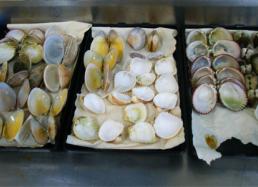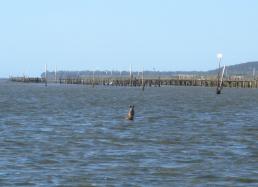3: Mud
North Stradbroke Island has extensive tidal flats, exposed twice a day. These flats are home to many burrowing bivalves that must be dug out using shovels and sieves. And this is how we've spent the first couple of days—shoveling mud during low tides and processing and studying the animals in the field laboratory during the rest of the day.
Only a few days into the trip, we're very pleased—we've collected 10 of the targeted 20 bivalve species. Besides bivalves, we're having fun observing the other wildlife, and have to be a little careful while doing it: some of the local cone snails are very poisonous, and we've had to be careful when handling them. Even more dangerous are the common—very cute and very poisonous—blue-ringed octopuses. They're small enough to sit in an empty molluscan shell (or the palm of our hands) and, of course, do not like to be picked up.
Bigger animals abound, too. We've seen kangaroos at the beach before, but this time we were treated to an unusual experience: at a site called Myora Springs, a kangaroo bounded out of the woods, across the flats, and joined us right in the surf! After having to wait out a storm front, we're ready for deeper water. We'll go dredging for deeper-water bivalves from an Australian Fisheries vessel, the FRV Tom Marshall.
More news about that will follow soon....
—Rüdiger



